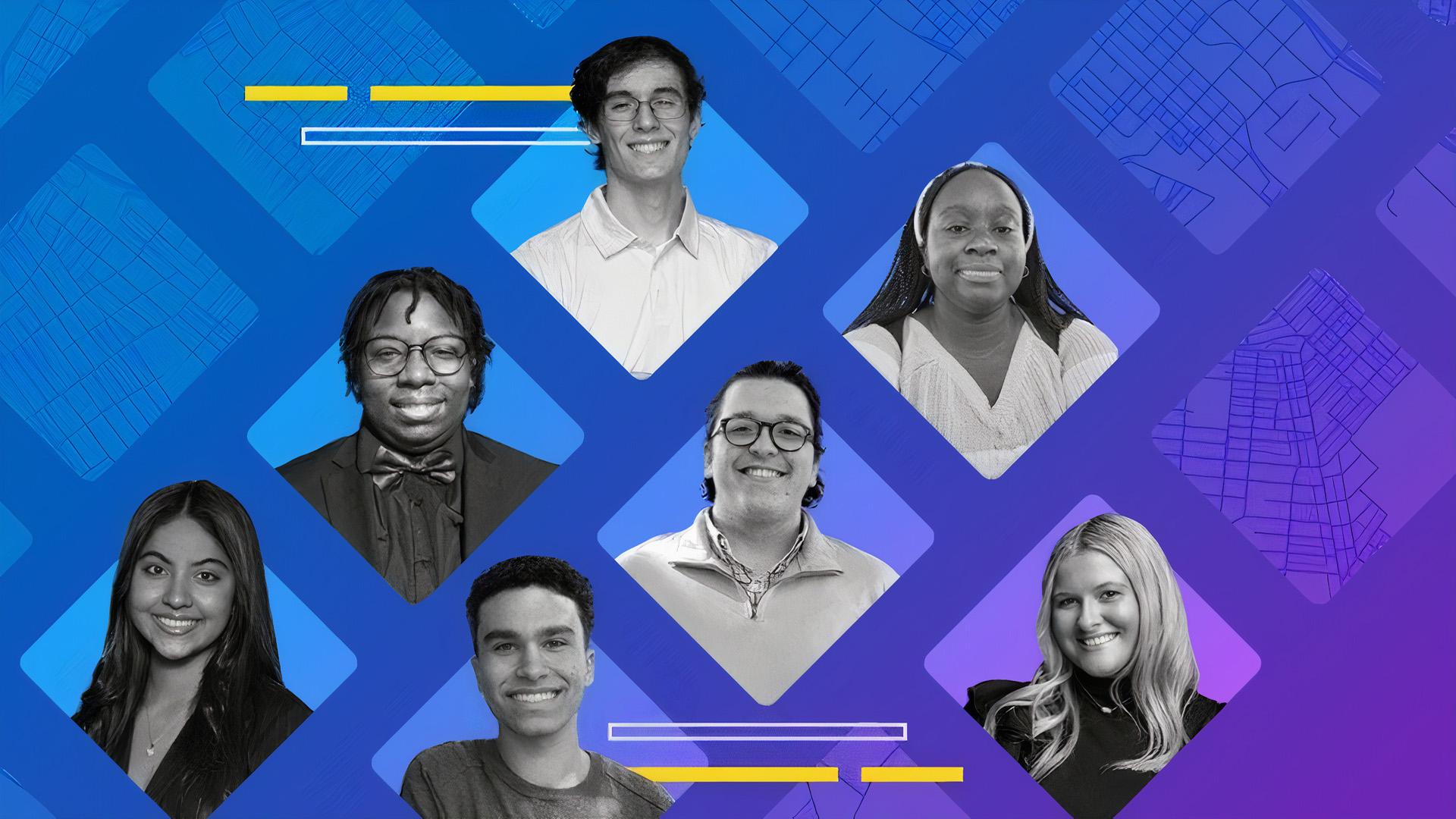
Supporting Non-Traditional Paths to Student Success
Filed In
- Supporting Students
Topics
- Student Success
Picture “a college student.”
Chances are, you’re thinking of a young person between 18 and 22 years old, on a campus lined with trees and stately brick buildings, wearing their school colors to class as they study for their bachelor’s degree.
If so, you’re only halfway right. That traditional vision of a college undergrad still exists, but it no longer represents the norm. “Non-traditional” students—a grouping that includes part-time and online attendees; adults returning to school after time off; and students pursuing technical certifications or trade credentials—make up a huge portion of the college-going public, and helping them meet their goals requires rethinking all sorts of student support structures.
Just how many non-traditional students are there?
While we still tend to think of traditional college students as the “default,” the fact is more than half of all college attendees fall into one or more “non-traditional” categories.
The National Center for Education Statistics (NCES) reports that, as of 2019, 7.7 million (nearly 40%) of the 19.6 million undergrads enrolled in American colleges and universities were part-time attendees, and around 1/3 of all college attendees are age 25 or older. (What’s more, there are an estimated 36 million adults who have attained some college education but left before earning a degree.)
And in terms of degree pursuit, Georgetown University’s Center on Education and the Workforce reports that “[c]olleges awarded roughly the same number of associate degrees and certificates combined (1.95 million) in 2016 as bachelor’s degrees (1.92 million).” Students specifically pursuing certificates and other forms of certification made up almost 12% of all undergrads.
These programs are particularly focused on historically minoritized and underserved communities. As quoted in Higher Ed Dive, “About 62% of Latino students and 56% of black students pursued an associate degree or certificate compared to 47% of white students.”
What are the unique barriers facing non-traditional students?
While all college students have to perform a high-wire balancing act between school, life, work and family, that struggle is often more difficult for adult and part-time students. 82% of part-time college attendees also have jobs; that’s double the rate of full-time enrollees. For older students, that balance gets even more complicated as you figure in childcare, commuting and increased likelihood of schedule conflicts.
Online learning can help minimize some of those logistical problems, but it brings its own difficulties. As Melvin Hines, co-founder and CEO of the student-assistance app Upswing said in an interview, “When you’re a nontraditional student and you are taking classes, it can feel isolating. You don’t get that camaraderie, that rah-rah feel that you typically expect from a college experience. No one seems to be there to help you ensure that you’re going to graduate. If you go to class tomorrow, that’s on you. And if you decide not to go to class tomorrow, that’s on you. I think that’s the single biggest issue that nontraditional students face is that they seem to feel like they’re out on an island.”
Philanthropist MC Belk Pilon, president and board chair of North Carolina’s John M. Belk Endowment agrees, telling the Chronicle of Higher Education “Adult students ‘have very different needs than a high schooler. They have full lives … They didn’t fall out because they couldn’t do the work. They fell out because the system wasn’t built for them, their lives were really full, and maybe they didn’t have the flexibility.’”
In addition, as students move farther from the traditional paradigm, financial support can be harder and harder to find. Most financial aid advice is geared toward 18-year-old dependents, not working moms or mid-career professionals trying to upskill. The majority of scholarships go to full-time, bachelor’s degree-seeking undergrads. And part-time students who are eligible for Pell Grants receive proportionally less than full-time students.
For those seeking to return to college after the pandemic, or to boost their resume with a certification, or to make their way to a degree one class at a time, it can too often feel like there’s no social, cultural or financial support—and that’s where scholarship providers and community organizations can truly make a difference.
How do we help non-traditional students get (and stay) back on track?
In some ways, the lack of financial support is the easiest issue to address, particularly for companies and foundations. Unlike programs like Pell, private-sector scholarships can be widely flexible about how and where dollars can be distributed. Explicitly including part-time students, returning adults and certificate seekers in a scholarship program’s eligibility pool can open up important and impactful sources of funding; so can subtler changes like simply removing a GPA or recent-transcript requirement.
Of course, those scholarship funds won’t magically find their way to non-traditional students, so informed outreach is vital to connecting the right students to the right support. And while traditional students can be informed via traditional means (their high schools, counselors, and advisors), outreach to non-traditional students has to take a few new forms.
Considering “more than half (57%) of associate degrees and nearly all (94%) certificates are tailored to helping graduates find employment in the field,” employers and trade organizations are uniquely motivated to support non-traditional students. Leveraging that support can mean researching trade organizations and publications; posting on Facebook, LinkedIn or Reddit groups dedicated to certain fields or communities; or establishing a presence at in-person or virtual events.
When it comes to online learners, it’s also a matter of meeting them where they are: investing in search and social awareness, connecting with student-focused blogs and apps (like InsideTrack, which specializes in coaching adults as they return to their educational path) and using social media to participate in conversations around educational technology and student connections. Just like being a non-traditional student means thinking outside the box, so does getting the word out about opportunities.
What does the future look like for non-traditional students?
In addition to all the things we can do as advocates and scholarship providers, there’s a current groundswell of government support for non-traditional students. This spring, the U.S. Department of Education is launching several programs under the banner of the Raise the Bar: Unlocking Career Success Initiative, designed to help more students focus on apprenticeship- and certification-based learning. And Inside Higher Ed reports on a Colorado program to bring non-traditional students back after COVID:
“State lawmakers launched CARE Forward Colorado this fall, which uses COVID-19 relief dollars to cover tuition, fees and books for a range of short-term certificate programs in health-care fields at Colorado community and technical colleges. [Colorado community college system chancellor Joe] Garcia said the short-term, free programs are a draw for students who want to swiftly get back to the workforce in a strong economy.”
These initiatives, along with new statewide “promise programs” aimed at returning students, are indicative of a step in the right direction. As schools, the public sector and private scholarship providers and supporters continue recognizing the prevalence of non-traditional students, we’re putting ourselves in position to eliminate more barriers and ensure more students from all walks of life can pursue their educational goals.
 hbspt.cta.load(241375, 'e7ee8901-26c4-41e5-b723-9951d1a471c4', {"useNewLoader":"true","region":"na1"});
hbspt.cta.load(241375, 'e7ee8901-26c4-41e5-b723-9951d1a471c4', {"useNewLoader":"true","region":"na1"});
Related Articles
Browse All

Scholarship Success Journeys: Oxford Law Student Ashley Truban


Our team is here to help you achieve your goals and build your custom scholarship program.